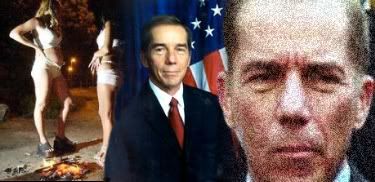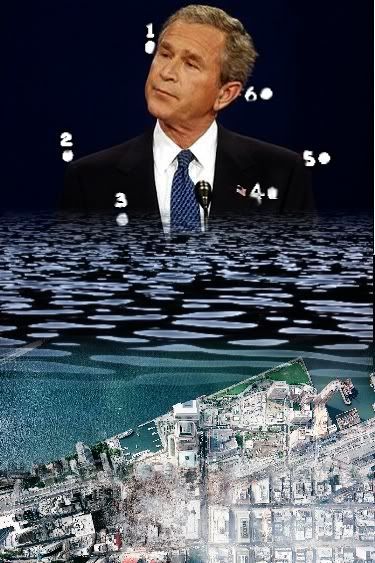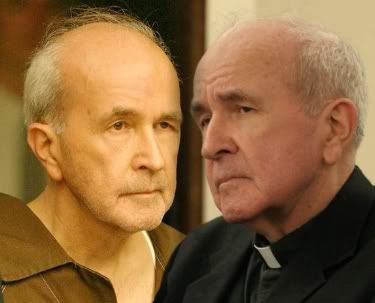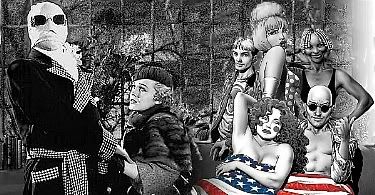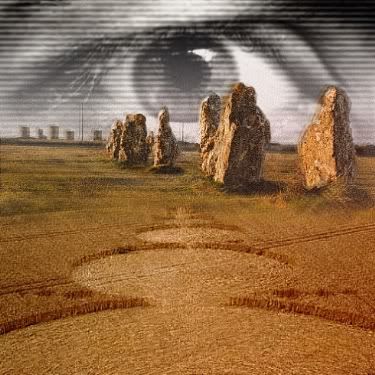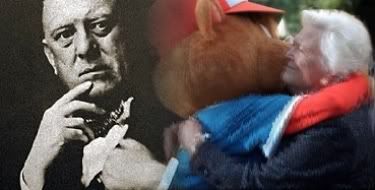What Dreams May Come
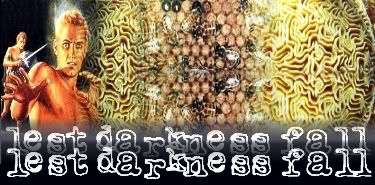
Take what you have gathered from coincidence - Bob Dylan
In Dante, Tennessee at about 6:30 on the morning of November 6, 1957, a 12-year old boy named Everett Clark opened the door to let out his dog, Frisky. Everett glimpsed a brilliant object sitting in a field about 100 yards away, but was too tired to think much of it and went back inside. Twenty minutes later he returned to call Frisky, and saw his dog standing near the object, along with several other dogs from the neighbourhood. "Also near the object," writes Jacques Vallee in Dimensions, "were two men and two women in ordinary clothing":
One of the men made several attempts to catch Frisky, and later another dog, but had to give up for fear of being bitten. Everett saw the strange people, who talked between them 'like German soldiers he had seen in movies,' walk right into the wall of the object, which then took off straight up without sound. It was oblong and of 'no particular colour.'
Early on the evening of the same day, in Everittstown New Jersey, John Tasco went out to feed his dog and saw a "brilliant egg-shaped object hovering in front of his barn," and encountered a dwarfish entity with a pasty face and frog-like eyes dressed in a green suit with shiny buttons and a tam-o'-shanter like cap who said, in broken English, "We are peaceful people, we only want your dog." When Tasco replied that the dog stayed with him, the entity retreated and his pet was found unharmed.
If we have the courage to appear foolish by looking closer, what do we find: two discrete and bizarre accounts from the same day of seemingly thwarted UFO-linked dog-nappings, one early dawn and the other early dusk, one told by a boy named Everett and the other from a town sharing the boy's name. In one the frustrated abductors resembled "German soldiers" but were able to pass through the wall of their craft, and in the other the entity had a leprechaun-like appearence. (Additionally, John Keel writes in The Eighth Tower that on the evening of November 6 in 1957 outside Kearney, Nebraska, a fertilizer salesmen named Reinhold Schmidt was given a tour of an oblong craft by German-speaking pilots and a truck driver near House, Mississippi encountered pasty-faced dwarfs who "babbled in a language he couldn't understand.")
Vallee adds, "the stories quoted in this connection verge on the ludicrous. But to pursue the investigation further leads to horror. This is a facet of the phenomenon we can no longer ignore."
Maybe the synchronicities are the point. Perhaps they're little tells by the universe that say, Pay attention to the fabric here, because you're a part of it.
John Keel documents many similar winks in The Eighth Tower. In the mid-1960s, unrelated people who shared only the surname "Reeve" became subjected to frequent, and statistically aberrant, visitations of the phenomenon. A man named Alvis Maddox was one of the victims of the collapse of the Silver Bridge in Point Pleasant, West Virginia, a tragedy that signalled the climax of the Mothman flap. Three months later, a deputy sheriff in Texas named Alvis Maddox was involved in an otherwise unrelated and widely published UFO sighting. The weirdness of Point Pleasant, West Virginia was followed by sightings in Point Pleasant, New Jersey.
Keel writes:
The law of synchronicity has created a fascinating statistical anomaly that suggest that witnesses are not accidental but are actually selected. In fact, the deeper you penetrate into this business, the more obvious it becomes that very little chance is involved. The sightings follow preset geographical and time patterns. In the seemingly chance contacts they often carry out repetitive actions that almost seem rehearsed.
Did the entities allegedly encountered by Clark and Tasco really want their dogs? There is an almost comic futility about their attempts, reminiscent of the seemingly intentional failures of the phantom clowns and phantom social workers to abduct children in the 1980s. They were demonstrations. Naturally we'll want to ask Of what, but perhaps that's not a meaningful question here. Perhaps it's the fact of demonstration and its attendent synchronicities and not its content that is most significant, because it's a manifestation in the mundane world of a normally hidden order of reality and congruity. At least it can be said that the demonstrations are for us, and that the patterns exist in order to draw our attention. Patterns like those in the fields emulating the standing waves of a voidless, holographic universe percolating with energy.
We likely know by our experience of them that synchronicities don't pertain only to borderland experiences. However, they do all lead us to borderland issues of human consciousness.
In 1906 Carl Jung found a young patient diagnosed as paranoid schizophrenic staring out of his ward window at the sun, moving his head from side to side. Jung asked him what he was doing, and the man explained he was watching the sun's penis, and moving his head it moved as well, and caused the wind to blow. Several years later, as Michael Talbot recounts in The Holographic Universe, Jung read a translation of an ancient Persian religious text that consisted of a "series of rituals and invocations designed to bring on visions":
It described one of the visions and said that if the participant looked at the sun he would see a tube hanging down from it, and when the tube moved from side to side it would cause the wind to blow. Since circumstances made it extremely unlikely that the man had contact with the text containing the ritual, Jung concluded that the man's vision was not simply a product of his unconscious mind, but had bubbled up from a deeper level, from the collective unconscious of the human race itself.
Perhaps madness may be said to be close to genius, or the psychotic to the mystic, because certain mental illnesses disable our holographic readers, leaving a paranoid schizophrenic with a inate sense of the interconnectedness of things but without a way of interpretation, and so a crippling ego confusion settles in.
But collectivity is not a trait of merely the unconcious mind, since one of its common aspects is also our everyday synchronicities: the little moments that tell us we're not observers of the universe set apart from it but its engaged components; and that our thoughts and even our dreams are not thought and dreamt in isolation. (In the 1960s and '70s Dr Montague Ullman's Dream Laboratory at Brooklyn's Maimonides Medical Center generating extraordinary data suggesting a test subject's dreams could be influenced by the psychic effort of someone unknown to them concentrating on an image in another room.
For instance, in one series of tests the target picture was Chagall's Paris Through the Window: a "colorful painting depicting a man observing the Paris skyline from a window. Certain unusual elements stand out very clearly: a cat with a human face, several small figures of men flying in the air, and flowers sprouting from a chair."

Results from the test subject's Third Dream Period:
I was walking. For some reason, I say French Quarter .... And I was walking through different departments in a department store ... talking with a group of Shriners that were having a convention. They had on a hat that looked more like a French policeman's hat, you know the French .... I said French Quarter earlier, but I was using that to get a feel. . . of an early village of some sort .... It would be some sort of this romantic type of architecture-buildings, village, quaint.
Fifth Dream Period:
The memory I remember is a man, once again walking through one of these villages, these towns. It would definitely be in the nineteenth century. Attire. French attire. And he would be walking through one of these towns as though he were walking up the side of a hill above other layers of the town.
An excerpt from the subject's notes of associative material:
The thing that stands out is the dream where I described the village .... It's a festive thing ... the Mardi Graish type .... Well, the area must be - I mean, just basing it on the costumes and all - the nineteenth century. Early nineteenth century ... either the Italian or French or Spanish area .... A town of this area .... It would be of the...of this village type .... Houses very close covering the hills.
Not much has come of this research because psi is still a foreign language, sounding like gibberish, to much of the scientific establishment. Perhaps more profoundly, the empowering implications of human paraconnectivity is something not to be encouraged by forces which mean to keep us divided, dejected and impotent.
Frederick Taylor Gates was a businessman and philanthropist who helped the Rockefellers spend their money and steered John D. Jr. towards a life-long interest in education. In his 1906 Occasional Letter No. 1, a publication of the General Education Board, a philanthropy he co-created with the Rockefellers to allegedly "support higher education and medical schools in the United States, and to help Black schools in the South," Gates and Rockefeller had their own dreams:
In our dreams...people yield themselves with perfect docility to our molding hands. The present educational conventions fade from our minds, and unhampered by tradition we work our own good will upon a grateful and responsive folk. We shall not try to make these people or any of their children into philosophers or men of learning or men of science. We have not to raise up from among them authors, educators, poets or men of letters. We shall not search for embryo great artists, painters, musicians, nor lawyers, doctors, preachers, politicians, statesmen, of whom we have ample supply.
The task we set before ourselves is very simple...we will organize children...and teach them to do in a perfect way the things their fathers and mothers are doing in an imperfect way.
Dr Walter Freeman, President of the American Board of Psychiatry and Neurology in 1948 whose assembly-line ice-pick procedure lobotomized Frances Farmer, didn't like his dreams. Having scared himself with a nervous breakdown brought on by overwork, he took up the habit of at least three capsules of Nembutal every night to induce dreamless sleep. In the 1950s he wrote that lobotomies "made good American citizens" out of "schizophrenics, homosexuals, and radicals."
Public philosopher Jane Jacobs died Tuesday morning at 89. She's best remembered today for her Silent Spring of urban planning, The Death and Life of Great American Cities, but someday it may be for her last book, Dark Age Coming, published in 2004. About its subject Jacobs wrote:
We in North America and Western Europe, enjoying the many benefits of the culture conventionally known as the West, customarily think of a Dark Age as happening once, long ago, following the collapse of the Western Roman Empire. But in North America we live in a graveyard of lost aboriginal cultures, many of which were decisively finished off by mass amnesia in which even the memory of what was lost was also lost.
Mass amnesia, striking as it is and seemingly weird, is the least mysterious of Dark Age phenomena. We all understand the harsh principle Use it or lose it. A failing or conquered culture can spiral down into a long decline, as has happened in most empires after their relatively short heydays of astonishing success. But in extreme cases, failing or conquered cultures can be genuinely lost, never to emerge again as living ways of being. The salient mystery of Dark Ages sets the stage for mass amnesia. People living in vigorous cultures typically treasure those cultures and resist any threat to them. How and why can a people so totally discard a formerly vital culture that it becomes literally lost?
Mass amnesia, like a Dark Age, can be intentionally induced. Ice-picks are effective as a tool of forgetting, but even Dr Freeman when up to speed could only lobotomize one at a time. There are more efficient methods for a mass culture that by its nature may be catastrophically amnesiac. Though there's so much we don't need to forget, because we've never learned the plenum we contain.
"The Empire never ended," wrote Philip K Dick. But he also added, "Against the Empire is posed the living information." The patterns, synchronicities, cryptograms and codes that are forever creating the universe, and us with it, because that's the stuff of which we're made.
The Empire never ended. But we're not finished, either.


